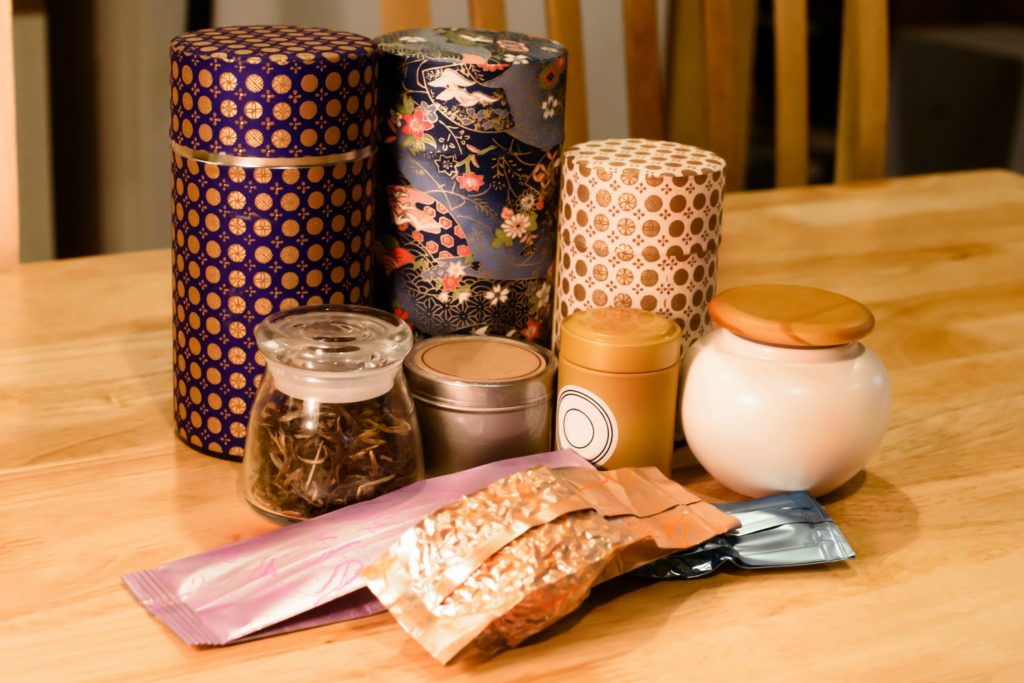
Credit: Lee Reyes
Storage is a challenge tea drinkers have struggled with for as long as Camellia sinensis has been part of our lives. Dark teas like puer were aged in smoky kitchen rafters in China for centuries. Wooden chests lined with lead were used to transport shipments on long sea voyages. During the Victorian era, the British stored their tea in ornate caddies under lock and key.
Modern day tea drinkers have many more options. Methods vary widely as the unique categories of tea create different challenges. In addition, there are environmental variables that will help decide the best practice in preserving the fresh taste of the teas you drink. In all cases, the ultimate goal is to preserve the drinkable lifespan of the leaves.
Why is tea so sensitive?
Tea is a dry food. As such it is susceptible to insect contamination, moisture absorption, and mold. Tea leaves usually won’t spoil like high-moisture food (bread for example) but the flavor diminishes considerably over time. Green tea is the most fragile. These teas should be consumed within six months of opening the sealed package. Matcha, even less time – just a couple weeks, max. Other teas will last longer depending on how well they are protected. A general rule is that tea processed to higher levels of oxidation and roasting display the longest shelf life.
Tea Buyer’s Guide
- Reading the Leaves
- Preserving the Life of the Leaves
- Chigusa: Ancient Japanese Diaries as an Art of Tea
Air and moisture
Arguably the #1 enemy of tea freshness is air and moisture. Tea is hygroscopic (readily absorbs moisture from the air) which means that dry tea exposed to air for prolonged periods of time tends to pick up moisture. This can cause deterioration of quality and staleness. Remember that in the tea production process, the final step of firing removes remaining moisture in the leaf, effectively preserving it and locking in freshness. An indication of staling in green tea is a faded overall tone or even reddish discoloration (ie: oxidation). The brewed liquor may also take on a dull or slightly cloudy appearance, instead of being bright and clear. This can be particularly noticeable for delicate Japanese green teas. Black teas, in particular, will take on a sour, overly tannic taste. This will not harm tea drinkers but the tea will certainly not taste the way that it should. Excessive moisture in the air may also encourage the growth of mold on tea leaves. This isn’t a concern in most of North America but tea lovers in tropical climates will want to take extra care to keep tea in dry environments.
Odor
Tea rapidly takes on the aroma of whatever surrounds it. Wonderful teas that are scented with flowers like jasmine and the perfumy apricot-like fragrance of osmanthus have been made in China for centuries. However, that also means that tea is easily spoiled through accidental cross-contamination. This is because of the same quality that encourages tea to pick up moisture – its hygroscopic nature. Basically, any aromas carried in the moisture of the air, such as onions or garlic, coffee brewing, spices, etc, will also be absorbed by open containers of tea. Further, teas with strong aromas themselves, such as Earl Grey or Lapsang Souchong, should be stored in separate containers away from other non-scented or flavored teas. Placing tea in a refrigerator or freezer is not an appropriate, as leaves will absorb the smell of leftovers and develop a musty taste.
Heat
It’s also best to avoid excessive heat. Normal room temperatures are fine for storage in most climates, but cabinets near the stove or above appliances like toasters and countertop ovens should be avoided. Heat degrades the volatile compounds that give tea its aroma, causing the tea to quickly lose flavor. Tea stored in a freezer may remain fresher for longer periods (especially delicate white, greens and matcha) but this can be risky as most residential refrigerators and freezers don’t allow for low enough temperature or humidity to prevent moisture damage. They are also rarely free of any other aromas. If you decide to try freezing your tea, allow the tea to warm up to room temperature before opening to prevent condensation.
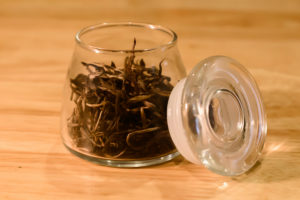
Credit: Lee Reyes
Light
Any source of light, natural or artificial, degrades tea leaves over time. This is why storage in glass containers is not a good idea. Even if the container is kept in a cupboard, it will be exposed to light every time that the cupboard door is opened. Tea exposed to light will become noticeably faded and dull over time, which is a sign of staling.
Ideal storage containers
Airtight, opaque containers are the best storage option. Stainless steel tins are the most common but ceramic and other materials are well regarded. A well-made container should protect the tea from all of the aforementioned threats to freshness. These can be easily found in just about every shape, size, color, and design. Smaller 3 or 4oz tins will usually cost around $3 and up depending on the construction and whether or not they are handmade. It is best to match the size of the tin with the quantity of tea that you have on hand in order to leave as little open space as possible. If choosing a container not specifically made for tea, it is important to ensure that the material is labeled as food safe.
When purchasing tea in larger quantities, it can be helpful to keep a smaller tin that can be refilled from a second larger container when needed. This avoids repeatedly exposing the entire stock to unnecessary air when just a small amount in required for serving. If possible, keep the tea inside the protective foil pouch it was likely purchased in (or buy some food safe or mylar-type pouches online) and then keep that pouch inside a container of your choice. This enables you to squeeze out remaining air from the packet. Keeping loose tea inside a container just traps air inside with the tea, causing staleness.
What about aging tea?
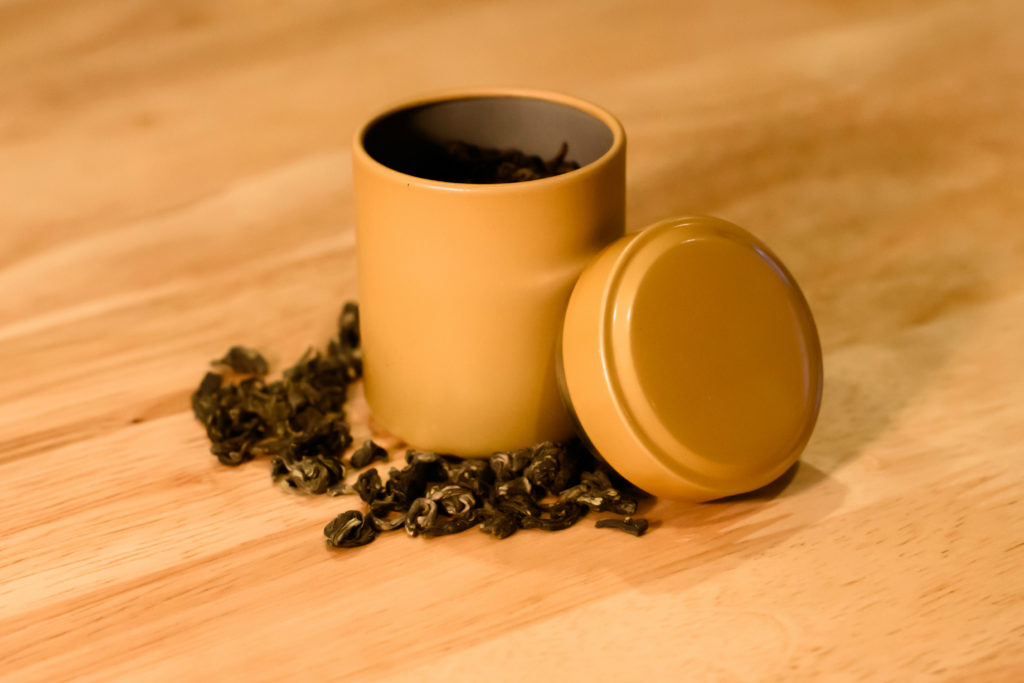
Credit: Lee Reyes.
To be clear, “freshness” isn’t just about time elapsed from harvest. It’s about maintaining, or even improving flavor quality. That includes aging.
During the Edo period in Japan, tencha leaves were stored in ceramic jars called cha tsubo for several months. This allowed the tea to mellow before being ground into matcha powder. Puer is ideally kept in a clean, dust-free and slightly humid environment to prevent the bacteria and yeast from drying out. If that happens, the tea will no longer develop with age. Some types of Puer may even be stored under intense humidity in areas like Hong Kong to accelerate aging. Oolong and puer are the most common candidates for long-term storage, but aging white tea has become trendy in recent years as well.
It’s important to keep in mind that just as in wine, not all teas age well. Most teas are best enjoyed now but a few (mainly dark teas and roasted dark oolongs) have the potential to greatly improve.
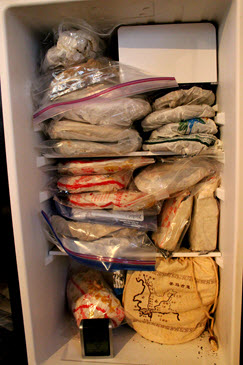
Credit: James Schergen, teadb.org
Those who wish to age their tea must carefully control the environment to achieve the desired result. For many in the U.S., this means storing the tea in earthenware pickling crocks or in homemade humidors in order to maintain a constant level of humidity. Crocks can quite pricey, running upwards of $100, but thrift stores and garage sales are affordable places to start. While custom built boxes and closets get the job done, it has become very popular to repurpose college dorm-style mini refrigerators (unplugged) for this task. The tea must be rotated periodically checked for signs of mold.
Alternately, if you have a really special tea collection, consider getting a table-top cigar humidor or mini wine cooler, as these are specifically designed to control temperature and humidity.
In addition to storage at home, it’s important to consider where your tea comes from and how it was handled along the way. How long ago was the tea harvested? Was it purchased directly from the producer or was it procured through a wholesaler? Did the fulfillment warehouse store the tea near other items with strong aromas? Tegan Woo is the founder of Amoda Tea, an online tea retailer that works with a wide range of tea brands from around the globe. She advises that tea should be purchased in heat-sealed, high barrier bags whenever possible. “You should not be able to smell the tea through the packaging,” she added. It is also not recommended to purchase tea that is kept in bulk style “scoop your own” bins or glass jars. Savvy buyers know the leaves will already have been compromised long before they make their way home.
According to Mo Sardella of The G.S. Haly Company, one of the oldest tea companies in the U.S., the shelf life varies depending on the type of tea.
Black Tea: is generally very stable. If handled properly, black tea should have a working shelf life of approximately 14-18 months from time of production.
Green Tea: tends to have the shortest shelf life. While many pan-fired green teas can hold their freshness longer, mostly due to rolling and firing applications, they should still be consumed within a 9-12 month period from manufacture. However, steamed green teas tend to be highly volatile, and should be consumed as quickly as possible; 6-9 months is ideal. Even further, finely graded green teas, such as matcha, should be consumed immediately (once exposed to air, match can degrade in quality within 2-3 weeks!)
Oolong Tea: it is safe to place oolong tea somewhere between black and green teas; perhaps around 8-14 months, depending on the leaf style and type.
Puerh Teas: While it is a common assumption that all pu-erh tea has unlimited shelf life, the reality is that pu-erh is just as sensitive to staling effects as any tea type, and should be kept in the same high-quality storage conditions as well. While raw (green) pu-erh has a longer shelf life than cooked (dark), both types can fall prey to any of the above-mentioned staling aspects, and should be protected accordingly.
Flavored Tea: flavored tea has a variable shelf life depending on the flavoring oils being used. If flavored teas are placed in poly/foil bags immediately after flavoring, the shelf life is greatly improved. Natural flavoring oils have the shortest shelf life, and artificial flavors and spiced teas tend to have the longest shelf life. Generally, flavoring oils will stale after 9-12 months, even in proper storage conditions.
Sardella also suggested that tea drinkers should “plan to brew only what you wish to consume in one sitting. All teas, even those of the finest quality, contain very small leaf particles which tend to pass through most commercial tea filters. While this can be a desirable characteristic in your favorite tea, often lending body and texture to the cup, as the solution sits, those small particles continue to extract in the cup, which can have negative returns over time. Brew what you plan to drink in one sitting, as this will enable you to enjoy the fresh and well-balanced characteristics of tea which were specifically developed by the tea maker.”
Life after freshness
No tea lasts forever and that’s perfectly ok! Rather than throw away teas which have gone stale, consider giving them a new purpose around the home. A bowl of dry tea can act as a great air freshener in cabinets and cupboards since the tea is so absorbent. In fact, in parts of Southeast Asia, you can find pressed tea made into doors and even furniture like tabletops specifically for the purpose of air purification. You could also sprinkle tea onto carpets and then vacuum it up after a time of walking around, adding a bit of freshness. Tea makes a great addition to garden compost, too.
Kabaizaiku Tea Caddy | Lacquered Cherry Wood
$140 | 425ml | 6.75 cm diameter | Stands 11.75 cm tallThis Japanese tea caddy is made entirely of cherry wood to preserve your most treasured teas. Meticulous hand-work in the small town of Kakunodate results in an astonishingly lightweight, waterproof container. No two alike, the rich cherry color changes hue over time.
Tea Market
Get More Value from Your Tea: BRU Maker One
+41794574278
Jacque's Organics
(647) 804-7263
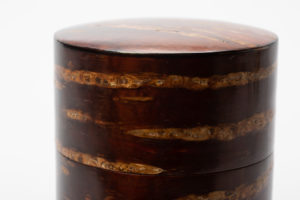
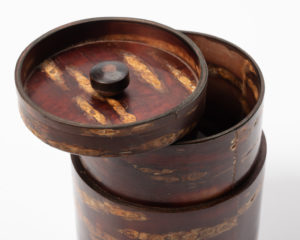
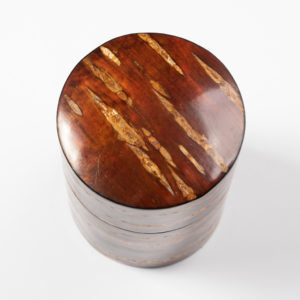
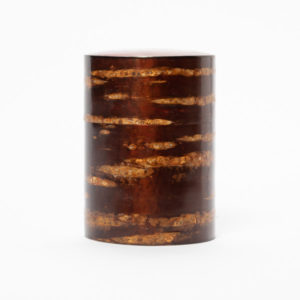
Thanks for this lovely advice! Very informative. I think I have been storing my tea safely… 🙂
So glad this was helpful. You’ll find more information just like this in every issue. Stay tuned.